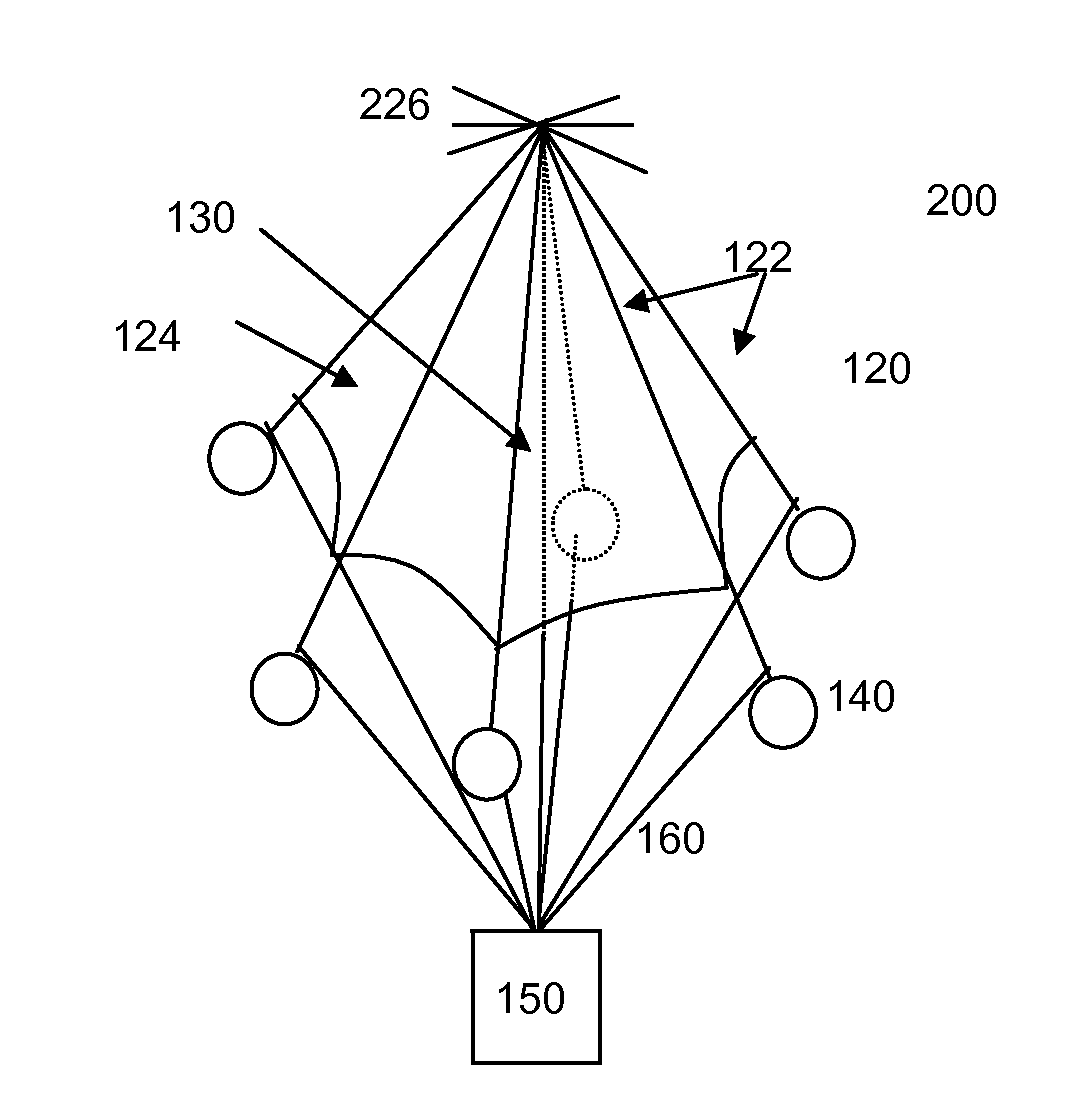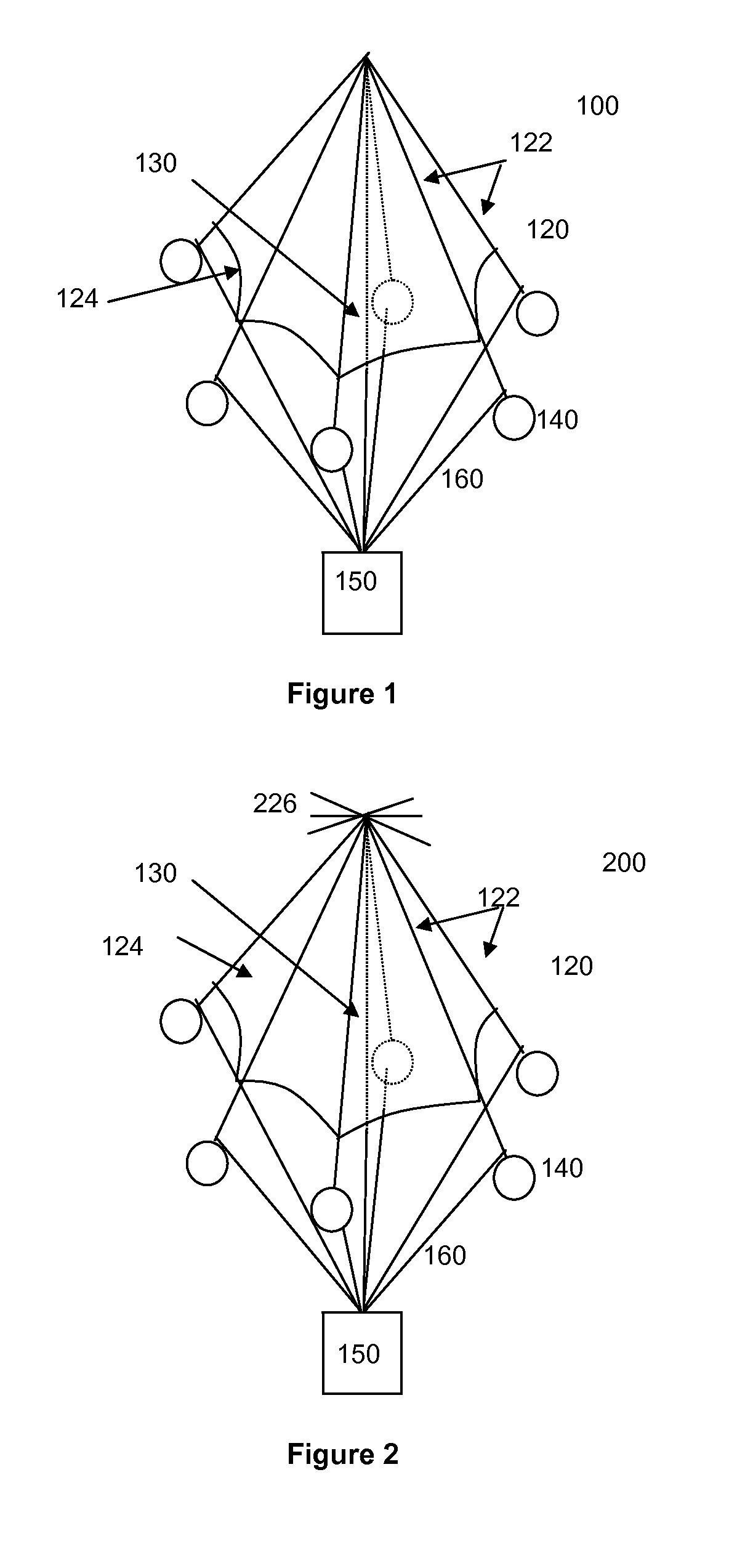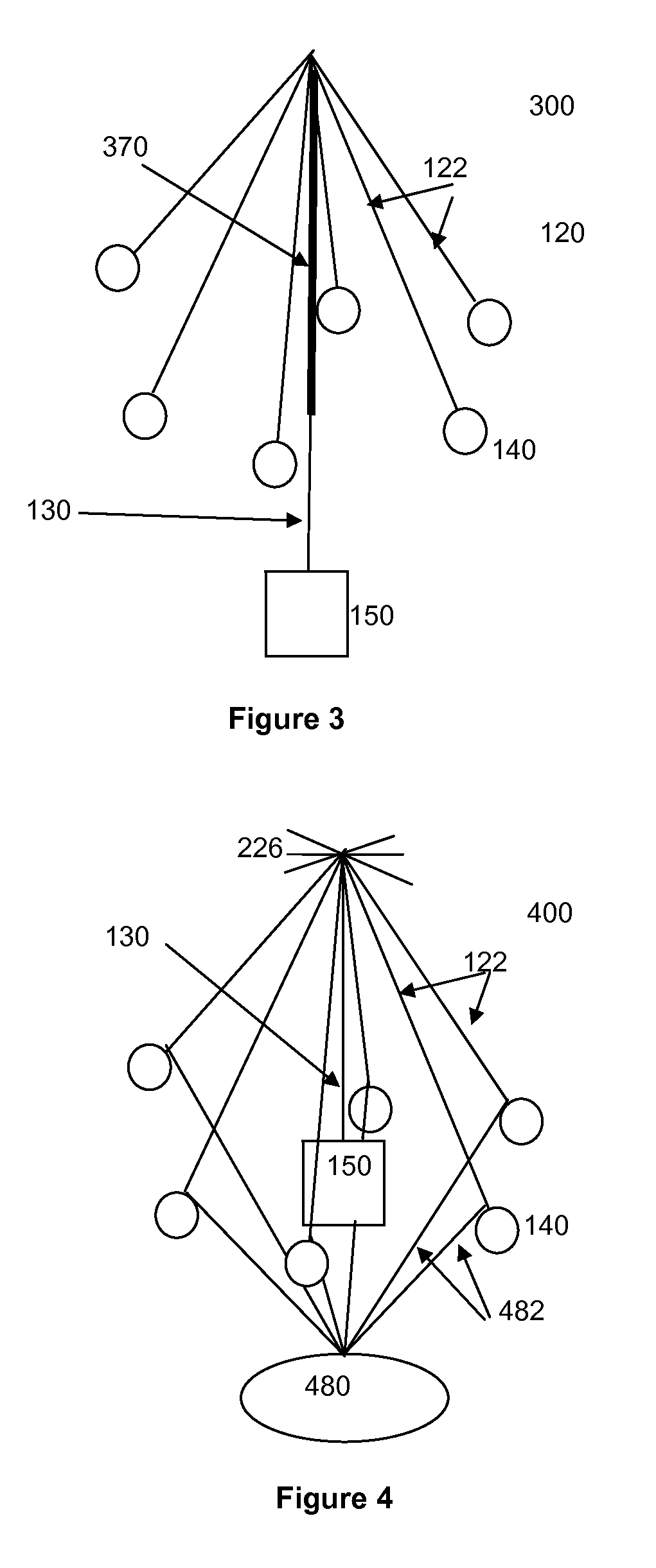Parachute assembly for deploying a wireless mesh network
a wireless mesh network and parachute technology, applied in the field of adhoc communication networks, can solve the problems of parachuting, cost effectiveness of solution, light weight of parachute assemblies, etc., and achieve the effects of simple and cheap design, quick and easy establishment, and low cost of parachute assemblies
- Summary
- Abstract
- Description
- Claims
- Application Information
AI Technical Summary
Benefits of technology
Problems solved by technology
Method used
Image
Examples
Embodiment Construction
[0041]According to one embodiment, a plurality of small, low-cost and low-power electronic communications devices are used to establish a wireless mesh communications network. Examples of wireless communications presently in use are those operating according to the known standard 802.11, otherwise known as WiFi. For the purpose of the present invention, any wireless, RF (Radio Frequency) protocol can be used as long as it provides support for a mesh network to be established i.e. a plurality of nodes within the network should be operable as a receiver and as a transmitter of packets and should be capable of discovering neighbouring nodes and establishing an optimal route for outgoing packets via one or more neighbouring nodes.
[0042]Depending on the application, the network could be secured by an additional layer of encryption (for example hardware encryption for military application). Also depending on the application, transit from node to node within the network could be encrypted ...
PUM
 Login to View More
Login to View More Abstract
Description
Claims
Application Information
 Login to View More
Login to View More - R&D
- Intellectual Property
- Life Sciences
- Materials
- Tech Scout
- Unparalleled Data Quality
- Higher Quality Content
- 60% Fewer Hallucinations
Browse by: Latest US Patents, China's latest patents, Technical Efficacy Thesaurus, Application Domain, Technology Topic, Popular Technical Reports.
© 2025 PatSnap. All rights reserved.Legal|Privacy policy|Modern Slavery Act Transparency Statement|Sitemap|About US| Contact US: help@patsnap.com



